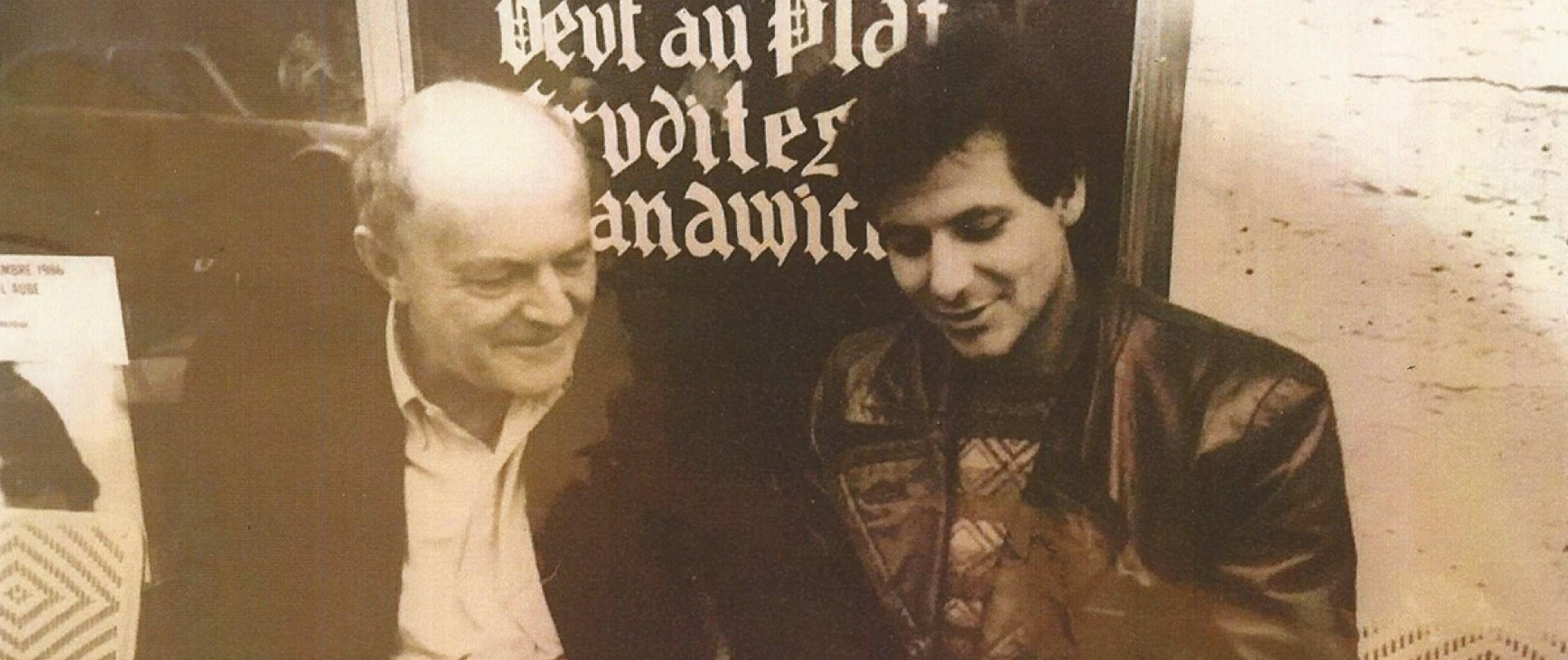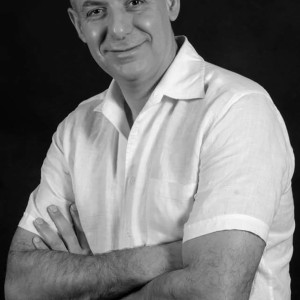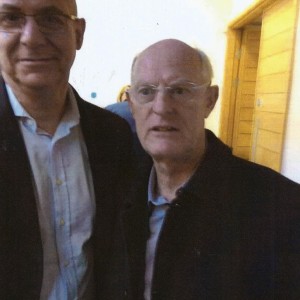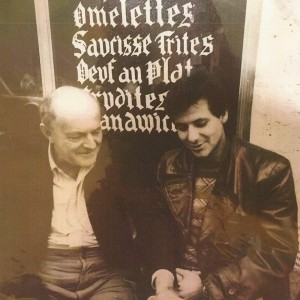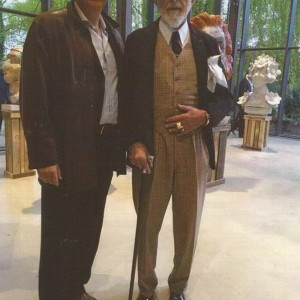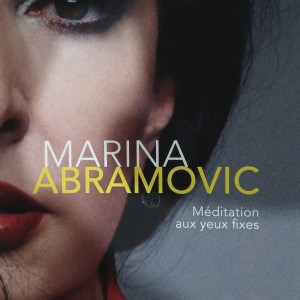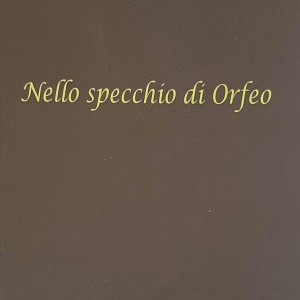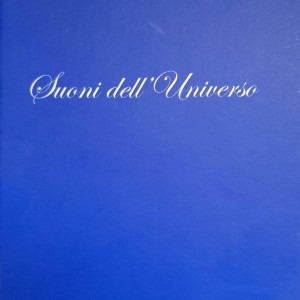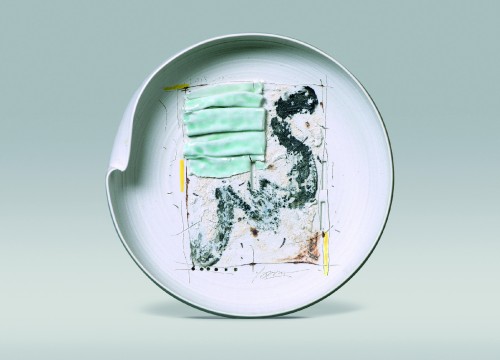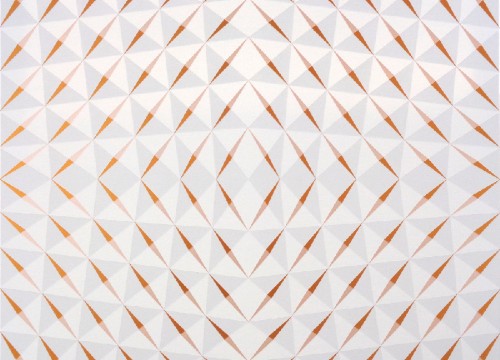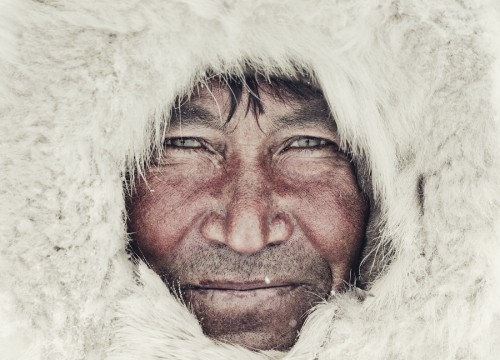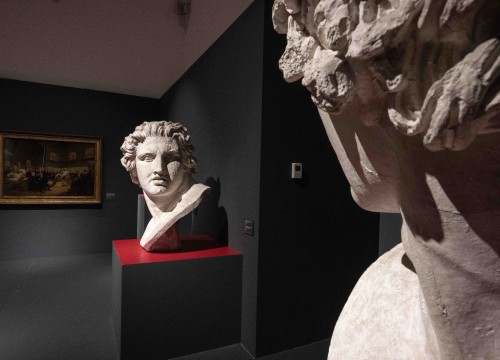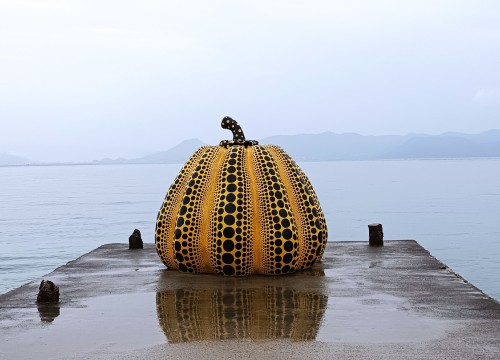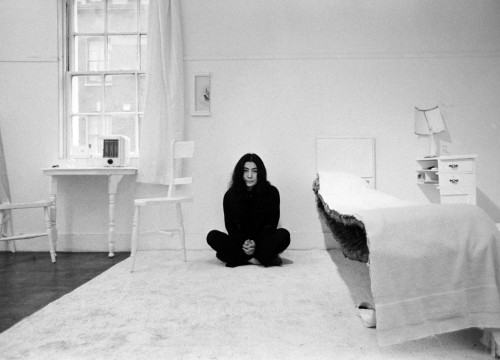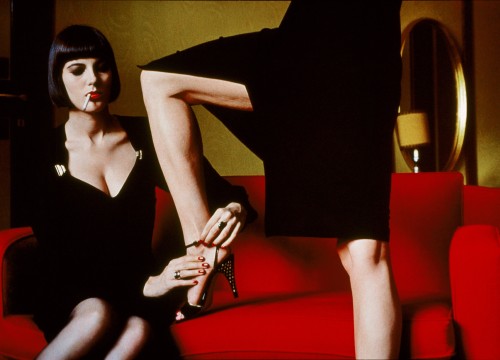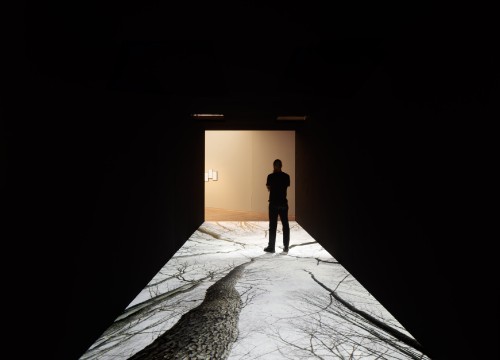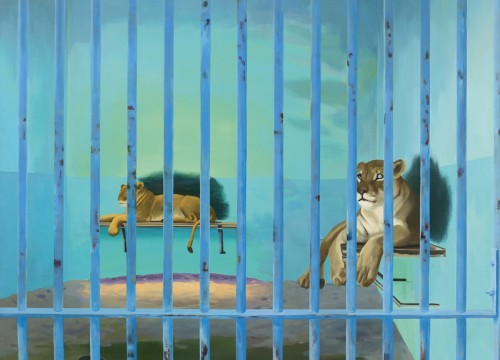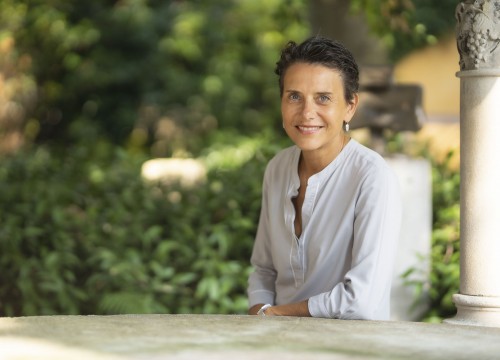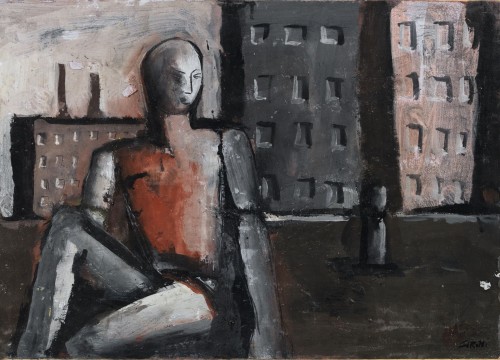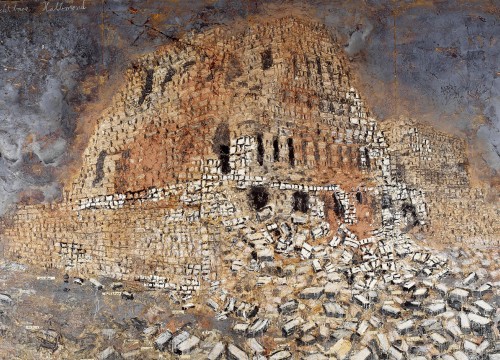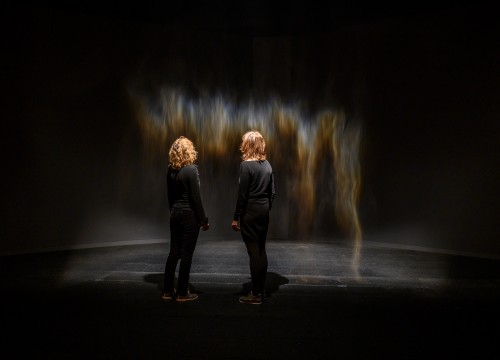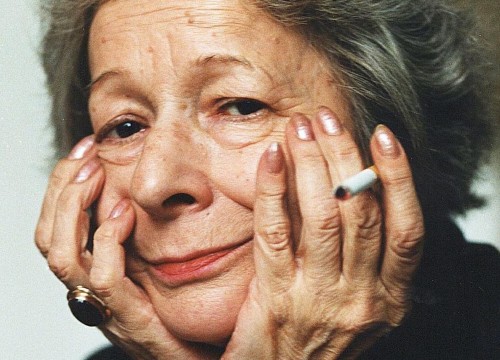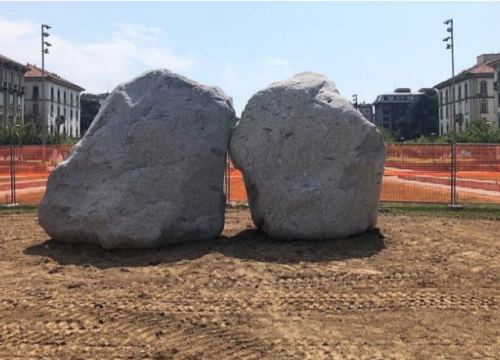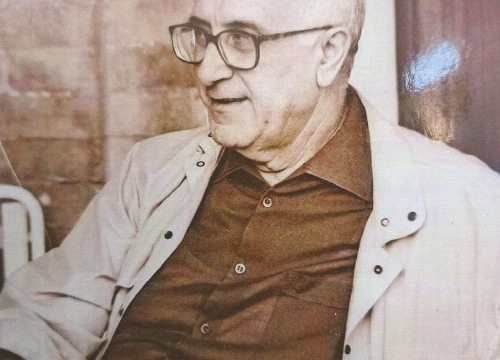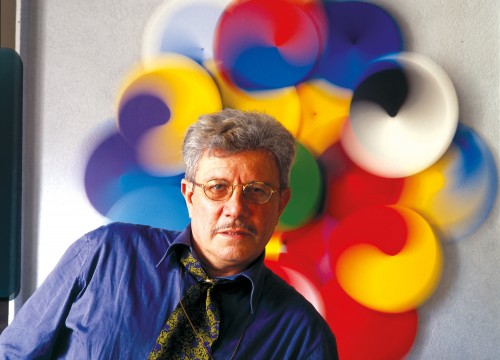Critic, poet, artist, focuses his research on the theme of man, art, nature
The XL Biennale di Venezia vernissage, in 1988, beyond its usual manifestation as the time/place of art, allowed me to re- find Tony Cragg in the Pavilion of Great Britain, the English sculptor. I remembered the artworks presented just the year before in Kassel during Documenta 8, and the Greek critic Démosthènes Davvetas.
EVERY EXPERIENCE WITH BEAUTY CAN BECOME A COLLECTIVE TRUTH
A sort of improper replica of what happened to me on September 26th, 1984 in Nice (during the exhibition of Paul Mansuroff in the Galerie Sapone), with a copy of Libération to read “Les Haines de Tony Cragg” in his hands, the piece signed by Démosthènes. I would have met him again in October 1992 in Rhodes, both speakers in the International Symposium “Concrete Utopia as a Social Project” looking at Joseph Beuys and his thought (his privileged relationship with the German artist, also close to me). I would have seen him with Marco Bagnoli in the village of Sogna for “Figure di Parola” four years later in summer, and in 2002 in Bolognano for his “Dedica a Beuys”. Once again in that fluid perception of being that refers to Heraclitus.
Critic, lecturer, curator, writer, artist/ performer and even boxer, but essentially poet, Démosthènes Davvetas, in recognizing the area to which Calliope, Euterpe and Erato oversee the status of creative energy, identifies in art the solution of the problems of living.
WITH SIMONIDES, FOR HIM POETRY IS
A TALKING PAINTING AND PAINTING A SILENT POEM
This is witnessed by his enormous and multidisciplinary production. Among his novels “Oreste, ou le Roman sans fin” (Flammmarion, 1997) and “Portrait of a terrorist”(Kaktos, 2022), the three volumes “Dialogues” (Jerome de Noirmont, 1999) and the poetry books “In the mirror of Orpheus” e “Sounds of the Universe” both published by Ap in 2016. There are also many written essays (Martin Disler, Tony Cragg, Antoni Tàpies, Gilbert and George, Enzo Cucchi, Jasper Johns, André Masson, Cy Twombly, Georg Baselitz, Alighiero Boetti, Julian Schnabel, Miquel Barcelò, George Sfikas, Rainer Fetting, Mario Merz, Jean-Michel Basquiat, Jean Le Gac, Francesco Clemente, James Brown, Marina Abramovic, Joseph Beuys, etc.) as well as the memory of his being a total artist, quite fluxus, in the succession of personal and group exhibitions/ performances.
And today, remembering the dialogue/ comparison with Ottavio Celestino for “PHOTO-GRAPHIA. The Fire of Prometheus” held last year in October at “SUarte Gallery” in Rome curated by Fiorella Basan, here I am to submit to the versatile, eclectic and protean friend some questions.
"BEUYS WAS MY SPIRITUAL FATHER, WE MET EVERY 10 DAYS"
How does your relationship with art and its multiple diversity come about?
When I was a child maybe the stories my grand mother told me often, maybe the fact that my father was old and I was afraid that he could die, maybe that I was in front of the moment that my grand mother died, maybe...., I was a terrible afraid person with big fear into me.
This fear in the school became my problem: the other boys in the class fell that started bulling me.
This situation made me full of anger. I fell terrible violence inside of me. This violence had to be expressed.
So one night that I could not sleep because of the bad memories in the school, I start to write a story where I imagine : I punished the persons bulling me. I fell suddenly calm. So it became an attitude: each time I fell bad I wrote a story and I was happy. It was a catharsis to me. The same time when I wanted in the school class to send a message to somebody, I started to write with words and to don’t be caught by professor i continue my phrase with images. So this attitude by the time became a personal way of expression. And when I understood that I have an artist mentality I started to mixt poetry and drawings. I understood quickly that and the poetry and the painting are the 2 faces of the same thing. So I was a poet who paint and a painter-poet.
Later I found in the Greek philosophy the phrase of the classical poet Simonides: the poetry is a speaking painting and the painting is a silent poetry. But my unsatisfied spirit I imagine my self to write my poetry everywhere. So the performance was born. For that helped me a lot my friendship with Joseph Beuys. He pushed me to expressed my self in a lot of ways. Also my studies in philosophy helped me a lot.
When and how did you meet Joseph Beuys?
I met Joseph Beuys in Athens. I was a Young student of low. Just by chance I passed in front of a gallery. I just looked at the drawings and I was seduced by their fluidity and transparency. I came into the gallery and I started to look at the drawings. I didn’t knew who was the artist. Suddenly a man with a hat and a gilet of aeroport approach me and he started to ask me .
-why you look at those drawings?
I saw a strange dressed guy with blew fever eyes to speak to me. I answered him.
- I love the fluidity of the drawings. Suddenly his voice got enthusiastic Fluxus...Fluxus...
I was surprised. But I could not understand what mean Fluxus. I knew nothing about contemporary art. So I tried to explain to him better:
-I mean it makes me to feel like the fluidity of Heraclite.
Suddenly he spoke with a very strong enthusiastic voice to me: Heraclitus.... Heraclitus..
And he started to say to me a phrase of Heraclite in Greek. I answered to him also with a phrase of Heraclite in Greek. And I asked him if he is a Greek. He told that he is a German. And he asked me to go with him for dinner.
I didn’t knew who was that guy. But I accepted because something seduce me. Eating with him it was a great experience because we spoke about philosophy, litterature etc. But I still his name didn’t say to me big thing because I didn’t knew him. I found really out who he was, months later in Paris when I show his photo in library.
I called him. He invited me in Duesseldorf. I went and stayed three days in his home. And then he sent me in Berlin where the director of DAAD gave me a scholarship for 4 months. When I came back to Paris for my studies I propose to newspaper Libération an interview with Joseph Beuys. They accepted. And like that I started my art critic period.
What was your relationship with the German master?
Beuys was my spiritual father. He make me to have a believe on me, to feel free and creative. I used to meet him almost every 10 days. We spoke a lot about philosophy, art and literature. He sent me to meet in Malta the president Don Midof saying to him: I sent you my ambassador. He push me to be my self and he teach me that first of all we need to have human values for to be a creative person. After I met him I could say now that my life change radically. I was not afraid nothing. He had a fantastic capacity to push me to discover the best of my self.
I made my university thesis on him and I became professor. He push my creativity and my desire of knowledge in the maximum. I missed him terrible. When I make my performances I think about him. After all those years he is still my hero.
His touch in the art of the second half of the 20th century is unique. A great mind,a great spirit which had one central idea of creativity: be a good person, make good in the society. His total ( spherical) art is a new kind of humanism. He will stay as the big master of goodness in the art history.
Where would the right man-art-nature relationship take us?
What we call nature is not only what we see in our environment. For exemple trees, animals, sea ,etc. The real nature as Heraclite said “love to be hidden”. Nature , ΦΥΣΙΣ, in Greek language means ΦΩΣ, light. So Nature is this light which is inside us and make us to see everything. Is our inside light our nature. Nature is this power-light which help to appear in front of our eyes the trees, the sea, the forest, the mountains etc.
Art also is the inner part of creativity. The forms of Art we can see are born from the inside power of art, which is the same time the nature-light. Nature-Art-Man is an organic strong power of creative light which give birth to the forms . This power can help us to leave in harmony with our self, in harmony with the others, in harmony with the world, in harmony with the death. Without this light of the organic relation Nature-Art-Man we are unhappy and not creative.
But, in the end, what is aesthetics?
Aesthetics is our expressed, open formed experience of the good (as beauty, truth and good) we have in the life. But this experience need to be part of our historical conscience. Aesthetics is not just our subjective personal idea about beauty. It need to be living experience ,it need to be a living food to our creative thinking. But this living thinking, this so personal and unique experience has to have also elements of collective and historical conscience. Every unique living experience with beauty can became a collective truth and make good to human history. If there is not a living experience then it is not Aesthetics. Is something other. Maybe a digital “ontology”. But everything digital ontology is not any more Aesthetics in the way that we call until now Aesthetics. The digital life brings the end of traditional living Aesthetics.
Philosopher, critic, poet, artist, and then?
Philosophie, critic attitude, poetry, Art, teaching, all those characteristics of my personality, they are just some of my possibilities I have as a creative person. I have a lot of others coming. It comes already politics. I write political articles in a daily newspaper and I wait the moment to have political responsibility. At the end,all those differents “ languages”, all those forms of expression, they are nothing more than my contribution as a “ poet” to the goodness.
But the mean idea is the poetry as creative energy. We need the “poetry” of everybody to serve the Good. Everybody is a poet. That’s my small philosophy of creative living.
This moment I have a big exhibition in Chalkos gallery in Thessaloniki and in “Free art space” in Peloponnese. I participate in a show in the “House of Cyprus” in Chyprus and also in Marseille in France. I just exposed finished also in “SUarte Gallery” in Rome. And I am in the discussions with an important space in Rome. In all those spaces I show paintings and I make performances.
How do you see the current artistic situation in Greece?
In Greece there a lot of good individually artists. But the Greek problem is that those artists “ imitate” European art. They try to be more European than the Europeans. But the life in Greece is not the same as in Europe. So there is not a living European creative experience but a litteraire experience, which leads to mimetic artistic attitude. And that can be a problem.

